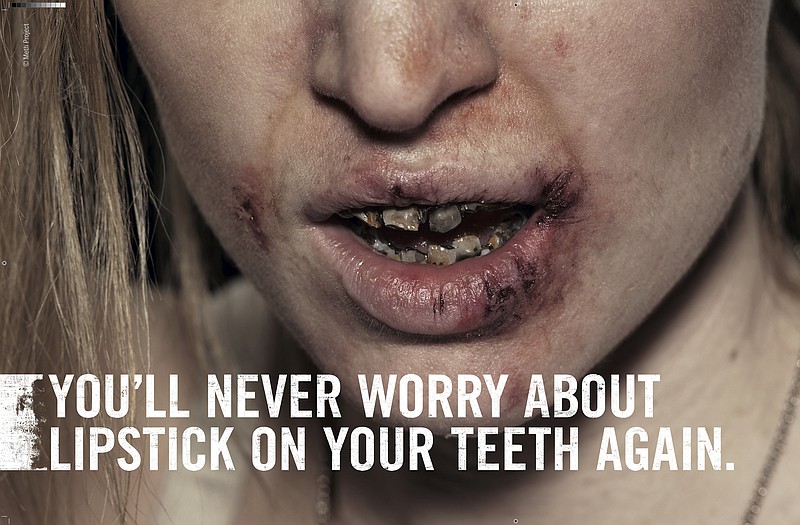A graphic statewide anti-meth campaign that Georgia officials hail as a success in its first year will continue with edgier ads and will target nearly 200 more schools across the state.
The newest wave of the Georgia Meth Project also will target more schools in rural areas where some of the highest numbers of meth labs are seized each year, including Walker, Whitfield and Gordon counties, said Jim Langford, the Georgia Meth Project director.
"Young people are seeing greater risk. There have been more conversations between teens and their parents," Langford said. "But we've got to keep it up."
The prevention campaign - funded by $7.5 million in private donations with about $250,000 in federal aid - began in 2010, he said. It has targeted teens through somber television and radio ads, with graphic messages splashed across billboards and with educational talks in schools.
Gov. Nathan Deal announced in mid-June that the state would launch Wave 2 of the campaign and cited the results from the Georgia Meth Use and Attitudes survey as the measure for the campaign's success.
The survey - which polled 2,000 teens and was conducted by the Roper Center for Public Opinion Research at the University of Connecticut - showed 52 percent of teens now believe there is a great risk in using meth. The new results were 11 points higher than the same survey taken last year before the campaign began.
The survey also showed that 87 percent of teens said the ads helped them understand that meth is dangerous even to try.
The latest campaign, which is slated to begin in September, will feature four television ads in prime time and several new billboards.
"You'll never worry about lipstick on your teeth again," one billboard's message reads, with a picture below of a scraggly blonde with sores covering her lips and rotten teeth.
Langford argues that, while some call the ads scare tactics, the campaign is designed to open teens' eyes to the truth about meth addiction.
"It's reality. It's very scary stuff," he said. "We don't have to make up things."
Officials and volunteers with the project have been in 46 schools since January, and Langford said they plan to visit 100 to 200 schools in the coming school year, including more rural communities in the Northwest part of the state.
While local police say they welcome help from the state when it comes to controlling meth use, they argue that sometimes the best approach is talking about teens' peers who have personally been affected by using meth.
"There's hardly a student up here who hasn't been exposed to it," said Lookout Mountain Drug Task Force Commander Larry Black.
In Walker, Catoosa and Dade counties, drug task force agents talk to students at local schools and even church youth groups about other teens who abused the drug. Agents also bring in a meth lab model and talk about the risks involved.
Nearly every time they speak to groups, teens will come forward to confide in an officer about someone using meth or its availability in their community, agents said.
LaFayette High School Resource Officer Billy Mullis said he invited the task force to speak at the high school this year after some teens told him about a growing drug problem at the school. Addressing students openly and using disturbing examples can have mixed results, he said, but such tactics can be effective.
"It varies," he said. "Some kids respond better to harsh reality, but others just want to turn a blind eye because they don't want to see what happened."

